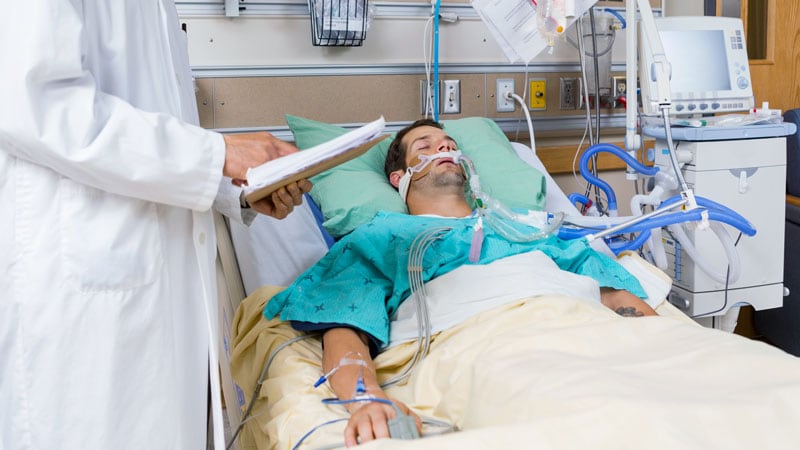Core Concepts
Continuous glucose monitors are revolutionizing hospital care for patients with diabetes by providing real-time glucose levels and improving patient outcomes.
Abstract
Introduction
- Continuous glucose monitors (CGMs) are transforming hospital care for diabetic patients.
- CGMs offer real-time glucose monitoring, potentially replacing traditional finger-stick tests.
Benefits of CGMs
- CGMs provide accurate glucose levels continuously, unlike periodic finger-stick tests.
- Nurses in the ICU believe CGMs enhance patient care compared to periodic tests alone.
Integration in Hospital Care
- CGMs are now part of hospital care, with FDA approval for in-hospital use.
- Dexcom's CGMs received a breakthrough therapy designation for managing diabetes in hospitals.
Usage and Challenges
- CGMs vary in reporting frequency, with Dexcom's G6 reporting every five minutes.
- Clinicians are experimenting with CGMs in general surgery and ICU settings.
Data Integration and Analysis
- Integrating CGM data into patient care tools is a focus, but challenges exist.
- Different audiences may require varied glucose level monitoring frequencies and data presentation.
Positive Impact of CGMs
- The wider use of CGMs in hospitals is a positive outcome of the COVID-19 pandemic.
- Nurses have embraced CGMs for their benefits in patient care.
Customize Summary
Rewrite with AI
Generate Citations
Translate Source
To Another Language
Generate MindMap
from source content
Visit Source
www.medscape.com
Continuous Glucose Monitors Come to Hospitals
Stats
In a 2022 study, glucose levels generated by CGM and those measured by finger sticks varied by up to 14%.
Quotes
"With CGM we can get the glucose level in real time." - Eileen Faulds, RN, PhD
"A finger stick is very painful." - Lizda Guerrero-Arroyo, MD
Key Insights Distilled From
by Marcus A. Ba... at www.medscape.com 06-02-2023
https://www.medscape.com/viewarticle/992703
Deeper Inquiries
How can the integration of CGM data into patient care tools be standardized across healthcare settings?
The integration of CGM data into patient care tools across healthcare settings can be standardized through the development of protocols and guidelines that outline the best practices for utilizing CGM data. This includes establishing standardized procedures for data collection, interpretation, and communication among healthcare providers. Additionally, creating interoperable systems that allow for seamless integration of CGM data into electronic health records (EHRs) can help ensure consistency and accuracy in data management. Collaborative efforts between healthcare institutions, device manufacturers, and regulatory bodies can also play a crucial role in setting standards for the integration of CGM data into patient care tools.
What are the potential drawbacks or limitations of relying solely on CGMs for glucose monitoring in hospitals?
While CGMs offer real-time glucose monitoring and have the potential to enhance patient care, there are several drawbacks and limitations to relying solely on CGMs for glucose monitoring in hospitals. One limitation is the accuracy of CGM readings, as studies have shown variations in glucose levels between CGMs and traditional finger-stick tests. This discrepancy can lead to potential misinterpretation of glucose data and incorrect treatment decisions. Additionally, CGMs may not be suitable for all patients, such as those with certain skin conditions or those who are unable to properly use the devices. Another drawback is the cost associated with CGMs, which may pose financial barriers to widespread adoption in healthcare settings. Furthermore, technical issues, such as sensor malfunctions or connectivity problems, can impact the reliability of CGM data and hinder effective glucose monitoring in hospitals.
How can the wider adoption of CGMs in hospitals impact the overall management of diabetes care beyond the pandemic?
The wider adoption of CGMs in hospitals can have a significant impact on the overall management of diabetes care beyond the pandemic by improving patient outcomes, enhancing efficiency in healthcare delivery, and promoting patient-centered care. CGMs provide continuous glucose monitoring, allowing healthcare providers to track glucose levels in real time and make timely adjustments to treatment plans. This can lead to better glycemic control, reduced risk of hypoglycemia and hyperglycemia, and improved patient satisfaction. Additionally, the use of CGMs can streamline glucose monitoring processes, reduce the burden on healthcare staff, and minimize patient discomfort associated with frequent finger-stick tests. By integrating CGM data into patient care tools and EHRs, healthcare providers can access comprehensive glucose data, facilitate data-driven decision-making, and optimize diabetes management strategies. Overall, the wider adoption of CGMs in hospitals can revolutionize diabetes care by promoting personalized, proactive, and data-driven approaches to managing the disease.
0
